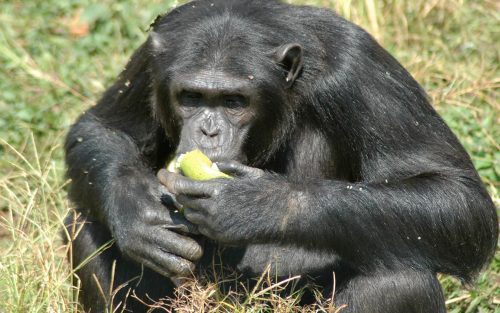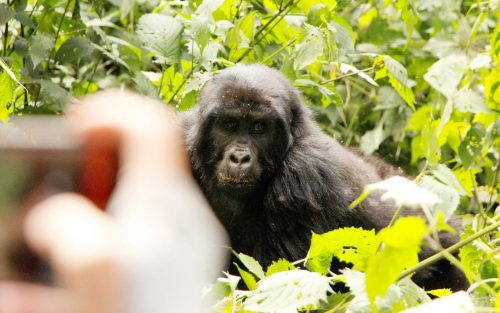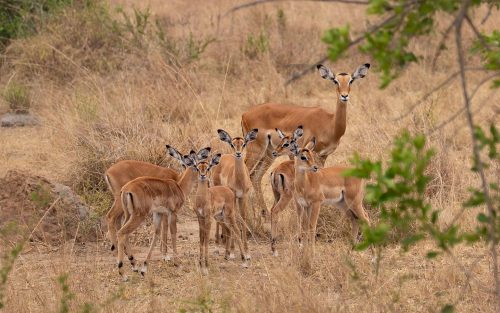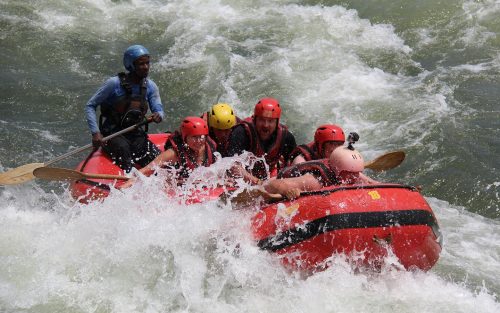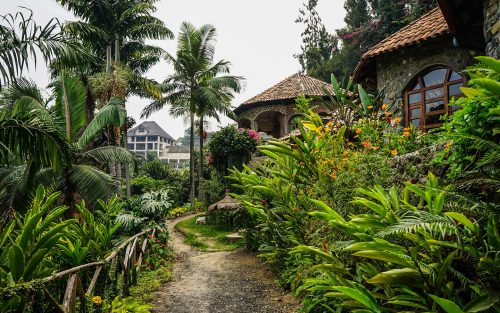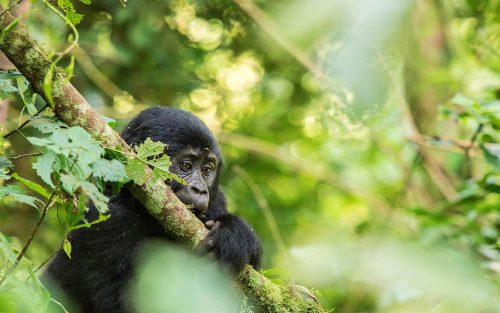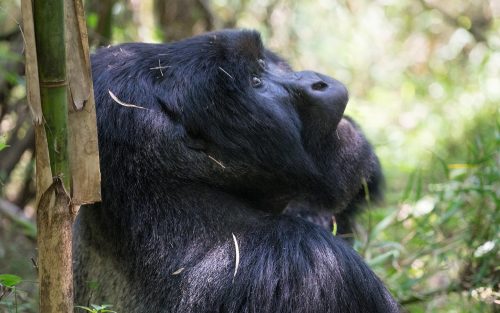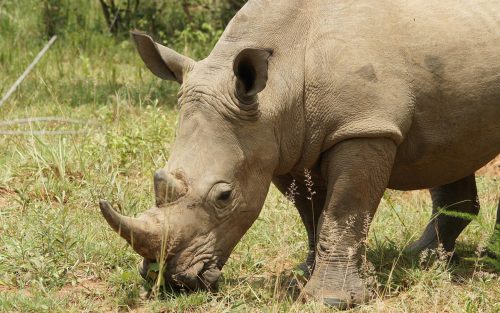Mount Elgon National Park
Home / Destinations /Mount Elgon National Park, Uganda
Elevation: 4321m
Size: 1121 Km Sq
Mount Elgon National Park is an extinct volcano located in eastern Uganda and bisected by the border with Kenya.
At 4,000km² Mt. Elgon is the 2nd highest Mountain in Uganda and 8th in Africa, it is regarded to have the largest volcanic base in the world.
Together with the fauna and flora, the park has a variety of scenery that includes cliffs, caves, gorges, waterfalls, hot springs, mesas, calderas, and mountain peaks.
The most popular areas are the four explorable, vast caves where frequent night visitors such as buffaloes and elephants come to lick the natural salt found on the cave walls. Kitum cave, with overhanging crystalline walls, enters 200m into the side of Mt. Elgon. At the Endebess Bluff, there is a panoramic view of the area’s escarpments, mesas, gorges, and rivers.
The major tourist activities in Mt.Elgon National Park include; game viewing, cave exploration especially Kitum, Chepnyali, and Mackingeny, primates and bird watching, butterfly watching, Hiking to the peaks, self-guided walking trails, camping, and photography.
There are also visits to the hot springs in the former volcano’s crater which bubble at temperatures of up to 48 °C.
The lower slopes are covered in tropical montane forest with extensive stands of bamboo. Above 3000m the forest fades into heath and then afro-alpine moorland, which blankets the caldera, a collapsed crater covering some 40 sq. km.
The moorland is studded with rare plant species and you’ll often see duiker bounding through the long grass and endangered lammergeier vultures overhead. In September it’s decorated with wildflowers.
You’ll probably see a few primates and lots of birds, including the rare Jackson’s francolin, alpine chat, and white-starred forest robin.
Habitats in Mount Elgon National Park
Mount Elgon National Park is home to over 300 species of birds, including the endangered Lammergeyer. Small antelopes, forest monkeys, forest elephants, and buffalos also live on the mountainside.
The higher slopes are protected by national parks in Uganda and Kenya, creating an extensive transboundary conservation area that has been declared a UNESCO Man and Biosphere Reserve.
Mount Elgon National Park is habitat to Endemic Species on the Mt Elgon massif including: Otomys Barbour (Barbour’s Vlei Rat), Crossarchus Alexandri (Alexander’s Cusimanse), Cercopithecus neglectus (De Brazza’s Monkey), Otomys typus (Northern Groovetoothed Rat), Rhabdomys pumilio (Four-striped Grass Mouse), Bdeogale Jacksoni (Jackson’s Mongoose), Grammomys ibeanus (Osgood’s Thicket Rat, Ruwenzori Thicket Rat), Mus Sorella (Mount Elgon Pygmy Mouse).
Mountain Elgon National Park threatened Bird Species include; Egyptian Vulture (Neophron, percnopterus), Black-rumped Button Quail (Turnix, nanus), Mountain Buzzard (Buteo, oreophilus), Elgon Francolin, Moorland Francolin (Scleroptila, elgonensis), Hartlaub’s Turaco (Tauraco, Hartlaubi), Marsh Owl (Asio, capensis), Forest Scimitarbill, Forest Wood Hoopoe (Rhinopomastus, castaneiceps), Grey-chested Babbler, Greychested Illadopsis (Kakamega, poliothorax), Golden-winged Sunbird (Nectarinia, reichenowi).
Threatened Reptile Species in Mount Elgon National Park include; Rufous-breasted Sparrowhawk (Accipiter rufiventris), Corncrake (Crex crex), Spotted Treecreeper (Salpornis, spilonota), Trachylepis irregularis (Alpine-meadow Skink), Adolfus alleni (Alpine-meadow Lizard), Cnemaspis elgonensis (Mt Elgon Forest Gecko).
Mount Elgon National Park is also home to three distinct cultural groups, all highly dependent on the forest ecosystem: the Bagisu, the Sabiny, and a small group of historically forest-dwelling and forest-dependent upland Sabiny known as the Benet.
The Sabiny depended historically more on livestock than the Bagisu, but both populations now combine agriculture, livestock, forest resources, wage labor, petty trade, and small businesses for their livelihoods.
EQUIPMENT TO USE WHILE CLIMBING Mt. ELGON
The hike routes to the Wagagai, the highest peak require the utility of hiking shoes, climbing ropes, and crampons. Depending on the weather conditions, travelers may require the use of ropes to climb up to Mt Elgon.
The Mt Elgon National Park hike routes do not require mountaineering expertise as long as you have a knowledgeable and experienced guide on track. Outback Adventure Safaris highly recommends prior booking and use of its skilled mountaineering guides
ATTRACTIONS IN Mt. ELGON NATIONAL PARK
Wildlife
The Park supports a variety of wildlife including rock and tree hyraxes, elephants, buffalo, Defassa waterbuck, oribi, bushbuck, duiker, forest hog, bush pig, leopards, civets, and serval cats, serval cats, spotted hyena; aardvark and several rodent species. However, these animals are rarely observed in the forest setting.
More commonly seen creatures are the black-and-white colobus; baboons; red-tailed, vervet, De Brazza’s, and blue monkeys; duiker and tree squirrel.
Birds
The mountain is home to 300 birds including 40 restricted-range species. 56 of the 87 Afrotropical highland biome species live here, notably the Moorland Francolin, Moustached Green Tinkerbird, and Alpine Chat.
Birds whose Ugandan range is limited to Mount Elgon include the Jackson’s Francolin and Black-collared Apalis.
Among those limited to just a few mountains in eastern Uganda are the Black-shouldered Kite and Tacazze Sunbird.
Mount Elgon is one of the few places in Uganda where the endangered Lammergeyer can be seen, soaring above the caldera and Suam Gorge.
Forest Exploration Centre
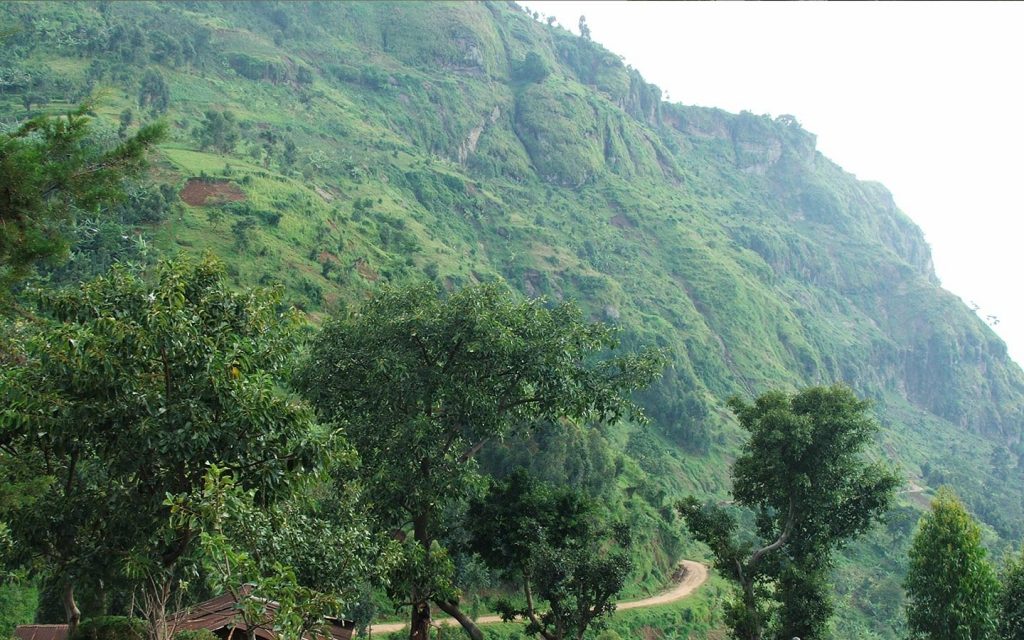
The Forest Exploration Centre at Kapkwai, 13km from Sipi town, doubles as an educational center for schools and the trailhead for climbers using the Sipi trail to the caldera.
Three circuits of between 3-7km run through the surrounding regenerating forest, where visitors can visit caves, waterfalls, escarpments, and viewpoints; and observe birds and primates. Bird species encountered here include Hartlaub’s Turaco, Eastern Bronze-napped Pigeon, Lemon Dove, Dusky-Turtle Dove, African Hill Babbler, Alpine Chat, Black-throated Wattle-eye, Mountain Yellow Warbler, Thick-billed Honeyguide, Grey Cuckoo-Shrike.
Mountain Caves
Mount Elgon’s slopes are riddled with caves left by moving lava and erosion of soft volcanic deposits. The most accessible are Kapkwai Cave, near the Forest Exploration Centre, and Khauka Cave on Wanale Ridge.
Historically, such features acted as shelters for locals and their livestock; later on, they provided manure in the form of bat droppings.
More recently, they were used by climbers and their porters, and even today, campsites are still located at Hunters Cave, Siyo Cave (near the hot springs), Mude Cave, and Tutum Cave – ideal for overnight expeditions.
Jackson’s Pool and Jackson’s Peak
Jackson’s Pool stands at 4,050m and is a natural pool with shallow waters. This pool lies in the shadow of the 4,165m high Jackson’s Peak, a free-standing volcanic plug rising from the western flank of the mountain.
These features were named after the explorer Frederick Jackson, who in 1889 was the first European to climb Mount Elgon. The peak is used by the locals as a spot to communicate with their ancestors.
The peaks and the Caldera
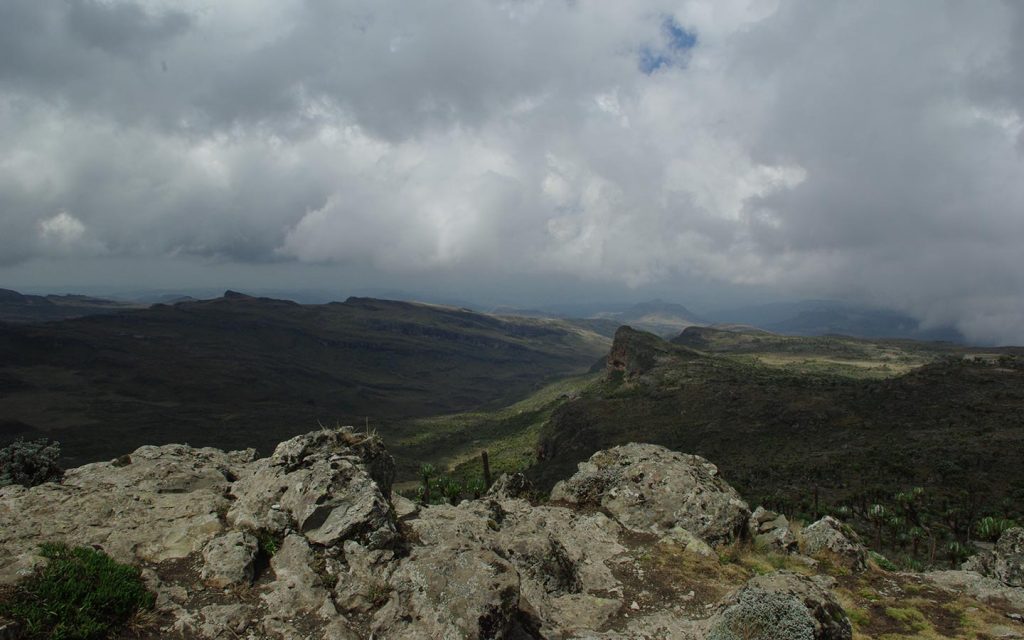
Mount Elgon’s highest peaks are formed by high points around a jagged rim enclosing one of the world’s largest calderas, at 40km long and 8km wide.
The tallest peak is the 4,321m Wagagi, followed by Sudek (4,303m), Koitobos (4,222m) and Mubiyi (4,210m).
The Caldera was formed as a result of magma being drained from the chamber. When it could no longer support the overlying volcanic cone, it collapsed into a depression-like shape. In the eastern corner of the caldera, hot springs are found at the start of the deep Suam Gorge. In the northwest, Simu Gorge was formed by the sheer weight of the water in the caldera cutting two stream beds out of the weak volcanic ash and agglomerate walls.
Vegetation
Mt. Elgon’s vegetation is banded into broad zones whose characteristics are dictated by altitude and rainfall. The lower mountain slopes are covered with dense forest and regenerating forests hung with vine-like lianas, epiphytes and lichens. The floor is covered with a carpet of ferns, orchids and flowering plants. Common tree species encountered in the tropical montane forest (1,500-2,500m asl) are olive Oleahochstetteri, prunus africanas, Elgon teak, podocarpus, cedar, Cordia, Neoboutania, allophyllus tombea and Aningueriaadolfi-friedericii.
The zone changes to mixed bamboo at 2,500-3,000m. The bamboo merges into open woodland dominated by hagenia abyssinica and African rosewood interspersed with hypericum – a giant form of St. John’s wort.
The heath zone (3,000-,3500m) is characterized by giant heather interspersed with grassy swards of blonde tussock grass dotted with pink and white everlasting flowers (ericriceum brownie and jonstonii), flame-coloured gladioli, blue delphiniums and red hot pokers.
The moorland or Afro-alpine zone (3,500-4,321m) contains Senecio elgonensis, Erica tree, giant lobelias with hairy leaves and plumes of tiny blue flowers, ladies’ mantle tussocks (archimilla elgonesis) and pink and white everlasting flowers.
The summit of the mountain is vegetated by rare Afro-montane species that include giant forms of lobelia and groundsel.
Nkokenjeru Ridge and Wanale
Nkokenjeru Ridge is a distinctive finger of forest extending outwards from the main massif of Mount Elgon. It lies at an elevation of 2,347m and covers a 25 km-long tongue of lava that flowed out of the side of the volcano after the cone collapsed to block the main vent. Nkokenjeru Ridge culminates at the superb Wanale Cliffs which tower above Mbale Town; the seasonal Nabuyonga and Namatyo Waterfalls are located here.
A trail at this western end of the ridge leads you to Khauka Cave where petrified wood can be found. This ridge also offers grounds for those interested in paragliding over the Mbale town.
The Nabuyonga Trail is a 5km loop with birding, fauna, and flora. Viewpoints overlook Mbale town, Lakes Kyoga, Bisina, and Salisbara, and the rugged mountains in the Karamoja region. On a clear day, you may enjoy vistas of Wagagai Peak and even areas of western Kenya.
Magical Nabuyonga stream
Beware of throwing a stone into the Nabuyonga stream – local folklore claims that if you do so, a thunderstorm will strike before you leave!
BEYOND THE PARK
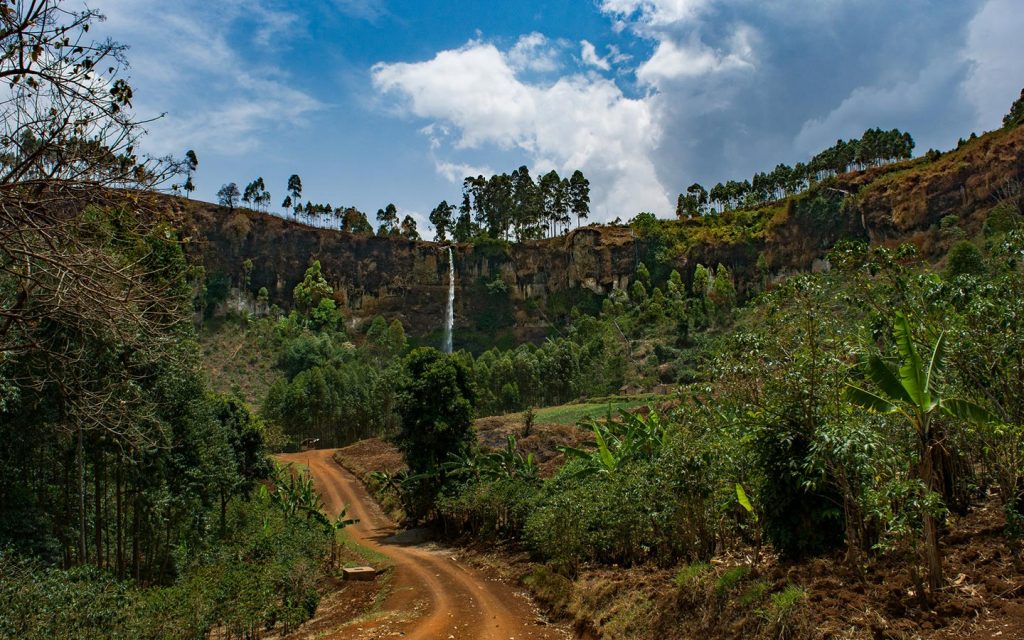
Sipi Falls
The northern and western sides of Mount Elgon rise in a series of massive basalt cliffs, often several kilometers in length, over which the mountain’s rivers plunge as beautiful waterfalls.
The best known are the three waterfalls at Sipi on the Kapchorwa road, just outside the park.
The lowest of these falls is the most spectacular as it cascades over a 100m cliff. The second, known as Simba, plunges 69m over the entrance to a cave.
Visitors can stand in the cave and enjoy a view of the back of the falls.
The third waterfall, also known as Ngasire, gushes over an 87m high ridge. Sipi Falls is less than an hour’s drive from Mbale on a paved road.
Easily accessible waterfalls are also found at Sisiyi, Bulago, Chebonet, and Wanale and many more are scattered across the mountain, offering spectacular views.
Tewei Hill
Outside the park overlooking Sipi Falls is the hill where, during the 1960s, Chemonges Kingo, King of the Sabiny would meet his subjects.
From the top, you can view the three falls, the Karamajong plains, and the Wagagai Peak.
Pian Upe Wildlife Reserve and Matheniko Bokora Wildlife Reserve
In the plains of Karamoja to the north of Mount Elgon lie Matheniko Bokora Wildlife Reserve and the expansive Pian Upe Wildlife Reserve, the second-largest protected area in Uganda, with an area of 2,788 km2. Wildlife found here includes rare species such as the roan antelope, lesser kudu, Bright’s gazelle, and ostriches which, in Uganda, are found only here and in Kidepo Valley National Park. Wildlife is concentrated around the Loporokocho swamp; bird species encountered here include Hartlaub’s Turaco, Eastern Bronze-napped Pigeon, Lemon Dove, Dusky Turtle Dove, African Hill Babbler, Alpine Chat, Black-throated Wattle-eye, Mountain Yellow Warbler, Thick-billed Honeyguide, and Grey Cuckoo-Shrike.
Rock paintings found at various sites within the Matheniko Bokora Wildlife Reserve are believed to date back over 3000 years and were created by the Kushite and Nilotic peoples.
Nyero Rock Paintings
65km north of Mbale, the Nyero Rock Paintings are the finest of several rock art sites in the region. Three panels are found within the extensive granite outcrop of Moru Ikara, 10km from Kumi Town and 55km from Mbale on the Soroti road. The most impressive is Panel Two which includes two canoes bearing human figures.
Scenic viewpoints outside the park
A detour to Bulago off the Mbale-Sipi road reveals a village standing high above a waterfall facing the Simu Valley towards Butandiga ridge. The route to Kapchorwa beyond Sipi Falls to the north provides a stunning view of Mount Kadam and the vast plains of Karamoja. The top of the Sironko Valley in Budadiri, enclosed by the Mudangi Cliffs and the Nkonkonjeru Ridge, provides a picturesque view of the montane forest and caldera peaks. Visitors should also drive to the top of Wanale Cliff for panoramic views over the town of Mbale.
ACTIVITIES IN Mt ELGON NATIONAL PARK
Visitors to the Mountain Elgon National Park can also take part in over ten major categories of activities which may include; Mountain Climbing, sports fishing, Sight Seeing, Game viewing, cave exploration especially Kitum, Caldera Peak Climbing, Chepnyali, and Mackingeny, primates and bird watching, butterfly watching, Hiking to the peaks, Cultural treks, self-guided Nature walking trails, and camping photography.
Mountain Climbing in MENP
Climbing Mt Elgon National Park offers some of East Africa’s most memorable climbing experiences and boasts a milder climate, lower elevation, and much more reasonable prices than climbs in neighboring Kenya or Tanzania.
Mt Elgon has five major peaks and the highest, Wagagai (4321m), is on the Ugandan side. It’s the second-tallest mountain in Uganda and the eighth-tallest in Africa.
A climb on Mt. Elgon’s deserted moorlands unveils a magnificent and uncluttered wilderness without the summit-oriented approach common to many mountains: the ultimate goal of reaching the top of Mt. Elgon is not the final ascent to the 4321m Wagagai Peak, but the descent into the vast 40km² caldera.
Climbers have the option of continuing their trek into Kenya. Park staff at the headquarters will take you to the immigration office in Mbale for the requisite paperwork and then hand you off to the Kenya Wildlife Service at the hot springs in the caldera. It’s a two-day hike down the Kenyan side.
Many travelers find Mt. Elgon an exciting alternative to the more strenuous climbs in East Africa.
It is easier to access throughout the year, less congested, and has many of the same attractions, with a milder climate and lower elevation. Climbing the peaks requires no special equipment or technical experience.
Sasa Trail
The Sasa Trail is the original route to Wagagai, and still the busiest as it can easily be reached by public transport from Mbale.
It’s a three- to four-day round-trip to the summit with a 1650m ascent on day one.
The Sasa trail is the shortest but toughest route to the peaks, traversing the community land and allowing you to explore Ba-Masaba farming settlements and culture.
From Budadari, which is considered the trailhead, a road leads 5km to Bumasola (you can take a car up this leg if you want) then it’s a short walk to the forest.
Almost as soon as you enter the forest, you reach Mudangi Cliffs, which are scaled via ladders, then it’s 2½ hours of pure bamboo forest.
The round trip takes four days and starts at Budadiri town at an elevation of 1,250m. The toughest climb of over 1,600m is completed on the first day, before crossing the park’s largest area of bamboo forest and passing Jackson’s Pool on the way to Wagagai Peak.
Sipi Trail
The Sipi Trail, which begins at the Forest Exploration Centre in Kapkwai, has become a popular return route as it allows you to chill out at Sipi Falls following your trip to the top.
The Sipi trail (four to six days, 56km round trip) is the longest trail to the peaks, passing through the northwestern mountainside through Tutum Cave to enter the caldera and reach Wagagai Peak.
The trail begins gently but becomes tougher on the third day from Kajeri Camp. On the first day, you can camp inside the huge Tutum Cave, which has a small waterfall over its entrance and once attracted elephants who dug salt out of the rock, much like some caves on the Kenyan side still do.
It’s a four- to seven-day round-trip, though you can opt to descend via the Sasa Trail, an easier route.
Piswa Trail
The Piswa trail (seven days, 49km round trip) is long and the most gentle trail. Starting high, the Piswa Trail has a gentler ascent than the Sipi Trail.
It’s the best wildlife-watching route as it doesn’t pass through bamboo stands, and it also offers the longest pass through the other-worldly moorland in the caldera.
Starting at the village of Kapkwata on the north side of the mountain, it traverses the softwood plantation to the Podocarpus forest.
It’s notable for its rich wildlife and spectacular views of the Karamoja plains in Uganda and the Nandi and Kapeguria hills in Kenya.
The Piswa trail also passes the hot springs on the way to the caldera and the peaks. Piswa Trail is less used because it begins in the difficult-to-reach village of Kapkwata, above Sipi.
Alternative Hiking Options
Lucky hikers in Mt Elgon will enjoy being amongst the park’s primates, birds, and rare tree species. Trails lead past caves, viewpoints, and waterfalls, with the option of camping overnight on the mountain slopes.
The various routes can be combined by ascending the Sipi/Piswa/Sasa Trail and descending the Sasa/Sipi Trail, which allows a traverse of the caldera and a visit to the hot springs.
The 7km (four-hour) mountain bamboo trail to Kapkwai Cave passes through a tropical bamboo forest. Along the trail are many primates, birds, and rare trees such as Elgon teak and Elgon olive.
The 5km walk to the Chebonet Falls and the 3km walk to the Kapkwai caves follow the ridge view trail. There is also an 11km hike to the Tutum Cave, with the option of camping overnight beside the cave.
In Wanale, a visit to Khauka Cave takes three to four hours. Alternatively, hiking groups can go to the viewpoint through the Nabuyoga loop where you can see Jackson’s Summit and Wagagai Peak.
In Budadiri, short day hikes are available covering the Mudagi Cliffs, Sasa River Camp, and Drigana Lower Falls. These are great for bird watching, nature walks, and overnight camping.
Transboundary hike/cross-border tourism: The higher slopes of Mount Elgon are shared with an adjacent national park in Kenya and a transboundary hike can be arranged. After ascending to the caldera with a UWA guide, climbers cross the border to descend with a Kenya Wildlife Service escort.
Nature Walks on Mt ELGON NATIONAL PARK
Enjoy views of Sipi Falls, the Walls of Death and the African sunrise across the Karamoja plains on these peaceful walks just outside Mt Elgon National Park. A full-day nature hike leads from Budadiri to the Mudange cliffs, known as the Walls of Death, at the boundary of the national park.
These cliffs are located in the tropical forest, and blue monkeys, black-and-white colobus and baboons are likely to cross your tracks.
At Sipi Falls, guides from the local community can organize walks of a few hours up to a full day around the local viewpoint. In Kapchorwa, a 20-minute Sunrise Trek at 6 a.m. from Noah’s Ark Hotel leads to the nearby Tewei Hill to watch dawn spreading across the vast Karamoja plains at the base of the mountain.
Mount Elgon National Park is also home to three distinct cultural groups, all highly dependent on the forest ecosystem: the Bagisu, the Sabiny, and a small group of historically forest-dwelling and forest-dependent upland Sabiny known as the Benet.
The Sabiny depended historically more on livestock than the Bagisu, but both populations now combine agriculture, livestock, forest resources, wage labor, petty trade, and small businesses for their livelihoods. a two-day Budadari to Sipi Falls walk along the slopes of Mt Elgon, visiting villages and coffee plantations en route (USh350,000 per person including food, tents, guide, and porter); no park permits required.
Bird Watching in Mt ELGON NATIONAL PARK
Excellent birding opportunities exist around Kapkwai Forest Exploration Centre, in particular in the secondary forest and thick shrubs along the loop trail to Cheptui Falls. It supports the African Goshawk; Chubb’s Cisticola, White-chinned Prinia, and African Blue Flycatcher among others.
Excellent birding opportunities exist around Kapkwai Forest Exploration Centre, in particular in the secondary forest and thick shrubs along the loop trails extended to cover Cheptui Falls.
It supports the African Goshawk; Chubb’s Cisticola, White-chinned Prinia, African Blue Flycatcher, Chinspot Batis, Mackinnon’s Fiscal, Dohertys and Luhders Bush-shrikes, Baglafecht Weaver, Cinnamon Bee Eater, Moustached Tinkerbird, Hartlaub’s Turaco, Tacazze Sunbird, Olive- and Bronze-naped pigeons, Black Kite and Black-collared Apalis.
There are also MENP Threatened Bird Species which include; Egyptian Vulture (Neophron, percnopterus), Black-rumped Button Quail (Turnix, nanus), Mountain Buzzard (Buteo, oreophilus), Elgon Francolin, Moorland Francolin (Scleroptila, elgonensis), Hartlaub’s Turaco (Tauraco, hartlaubi), Marsh Owl (Asio, capensis), Forest Scimitarbill, Forest Wood Hoopoe (Rhinopomastus, castaneiceps), Grey-chested Babbler, Greychested Illadopsis (Kakamega, poliothorax), Golden-winged Sunbird (Nectarinia, reichenowi).
Cultural Trekking in Mt ELGON NATIONAL PARK
Sipi Widows’ Group
Find out where your coffee comes from! Grown on the mountain shambas (an area of cultivated ground) of Mt Elgon is the Arabica coffee also named Sipi or Bugisu by the farmers – who have a reputation for producing some of the finest washed Arabica in Kenya and Uganda. The Sipi Widows’ Group will take you on a guided walk through the coffee plantation demonstrating how to plant, pick, grind, store, and wash the coffee.
You will also learn about the life of the Sabiny as you meet local residents, and participate in traditional weaving. Learn about African cuisine through the preparation, cooking, and tasting of local dishes. A visit to the women’s handcraft shop in the trading center is also highly recommended. Proceeds from the tour and shop are invested in maintaining the coffee trees; raising awareness about the dangers of female circumcision (traditionally practiced in this region), and paying school fees for orphans.
Budadiri Community Walks Ecotourism Experience
This community group, based in Budadiri, offers accommodation, car hire, cultural dances, guided coffee tours and community nature walks. Visitors can discover the region’s cultural dances, local gastronomy/cuisine preparation, folklore and its famous malewa bamboo shoots.
There is also a tour of Mt Elgon’s famous Arabica coffee processing plants, which supports local farmers. Nature lovers can indulge in one of the three trails – the full-day Namugabwe Cave Trail, passing through Bamasaba community land and banana plantations to reach a historical cave filled with bones; the Dirigana Loop Trail to the Dirigsana Falls and Gabushana Cave past local markets and the “Walls of Death”; or the three days walk to Sipi Falls which reveals the culture of two neighbouring tribes.
Mountain Biking in Mt ELGON NATIONAL PARK
Mountain biking trails run from Sipi trading centre to Chema hill in Kapchorwa town. It should take 1.5 hours and provides views of various waterfalls. A mountain biking trail runs from Sipi trading centre to Chema Hill in Kapchorwa town. It should take 1.5 hours and provides views of various waterfalls and the Karamoja plains. Bikes can be hired from Sipi River Lodge.
Rock climbing in Mt ELGON NATIONAL PARK
Rock climbing takes place outside the park at Sipi. There are 14 routes requiring various levels of rock scaling techniques. The toughest is a 35m climb while the easiest is 15m. Rock climbing takes place outside the park at Sipi. There are 14 climbs requiring various levels of rock scaling techniques, and all equipment can be hired from the Sipi Falls Tourist Guides Association. The toughest is a 35m climb while the easiest is 15m. Both command a picturesque view of the main falls and the Karamoja plains.
BEST TIME TO VISIT Mt ELGON NATIONAL PARK
While you can climb Mt Elgon year-round, the best time is from June to August or December to March. The busiest times are June and July, though this coincides with the rainy season. However, seasons are unpredictable and it can rain at any time.
ACCOMMODATION IN Mt ELGON NATIONAL PARK
Tourists on a Uganda safari circuit can visit the park any time throughout the year, although conditions in the park are more difficult during the rainy season and it is usually advisable to use 4×4 vehicles to access the park.
Available tourist accommodation includes; Lacaam Lodge, Sipi River Lodge, Sipi Falls Rest Camp, Mount Elgon Cottages, UWA Bandas and a number of accommodation facilities in Mbale town.
Custom Uganda Safaris
Can be adjusted to fit your travel needs. All inclusive African Safaris
Uganda Gorillas & Chimp Habituation Safari
Track Uganda’s Gorillas and take on the habituation of chimpanzee in Kibale forest
5 Days, 4 Nights
Uganda Gorilla & Golden Monkey Tracking Tour
The Golden monkey tracking experience in Mgahinga National Park.
4 Days, 3 Nights
Uganda Primate Tracking & Game Safari
Track the primates of Uganda, gorillas & chimps and also take a wildlife game drive.
8 Days, 7 Nights
Exclusive All Around Uganda Safari & Adventure
A 25 Day African safari around the pearl of Africa, Uganda, from Savanna to rainforest jungle
25 Days, 24 Nights
Uganda Gorilla Habituation and Lake Bunyonyi Tour
Far better than 60 minutes of gorilla tracking, Gorilla Habituation Experience gives you more.
4 Days, 3 Nights
Uganda Double Gorilla Trekking Tour
You’ll be tracking Uganda’s Mountain Gorillas in Bwindi twice, if you can handle the excitement.
4 Days, 3 Nights
Uganda Double Gorilla Habituation Experience Tour
Go on an expeditions with researchers in the Bwindi jungles to Habituation a family of gorillas.
4 Days, 3 Nights
The Ultimate Uganda Safari Experience
Visit the Nile river source, track gorillas and take classic savanna game drive safaris.

